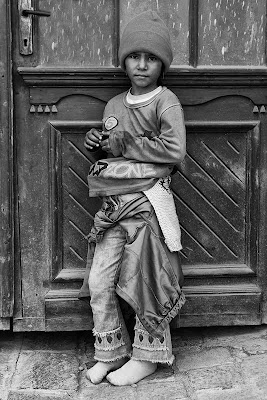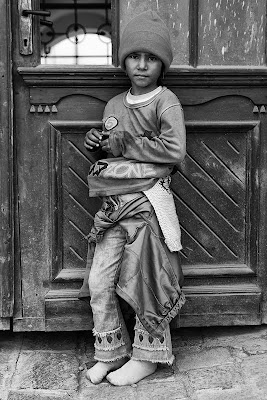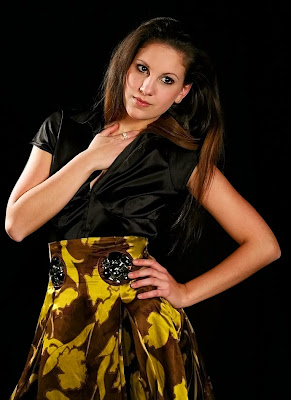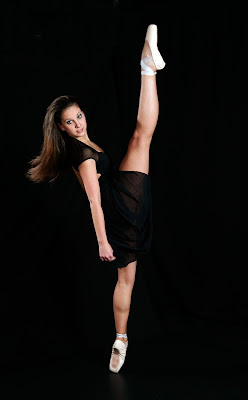Sajtófotó, the annual Hungarian Press Photo Awards have always been criticized for being open to all but always won by the same insiders. It was welcomed news to hear that foreign photographers (Jan Sibik, Sam Steward, Filip Horvath from AP and Thomas Szlukovenyi from Reuters were invited this year so that the competition doesn't turn into the usual game called
"I give an award to your protegé, you'll give one to mine". It was also hoped that the final selection will be more in line with the newest trends in photojournalism, especially with
Sibik on the board.
The winners will be announced later today but here are a few thoughts about the third round (that's the pool from which the finalists were picked) in the portrait category, one in which I was very interested. The jury's discussions could be followed online.
I was amazed to see these to nearly similar images appear. When I saw this first I said wooow that's a good one. According to the caption, it shows a boy in front of his ruined home after his village was flooded in May.

But like always, if something seems to be too good to be true then it usually is. Because here's the same boy again:
The jury quickly checked if the two shots were submitted by the same photographer (they weren't) and picked the second image. As I see it, it would have been more appropriate to reject both because one cannot shake off the feeling of the whole scene being staged and the boy coached. At least we spectators couldn't.
Then, there was the question of how much creativity is allowed in a portrait. This is a portrait of Béla Albertini, a renown photographer and university professor of photo aesthetics, photo journalism and photographic composition. As I see it, the photograph tries to convey the complexity of his character. It also makes reference to the art of photographic composition and maybe to analogue photography as well, since Albertini was a successful sociographic photographer himself in the old days.

The jury didn't really know what to do with this until the Hungarian moderator asked the guest jurors (especially Stewart who is a photo editor at NPPA) if they would chose it for publication, to which they replied with a clear "no" on the grounds that it isn't a photo-journalistic portrait and was obviously post-edited. A good argument. However, in the years before we saw many heavily edited (but excellent) photographs among the winners of the portrait category, like this:

(Péter András Németh: Blind aikido master)
...or this:

(Árpád Kurucz: Thrillusionist,
"Életbűvész")
So what's the way to take? I'm not saying that this picture should have been the winner but have some doubts about the jury's argumentation - are press photographers not allowed to think out of the box when it comes to conveying a subject's character and profession? After all, the guest jurors were involved to add a more forward-looking spirit in terms of photographic creativity to this competition.
Same here: the portrait of an actress. What do actresses do? They play different characters. To me, this photograph shows just that.

One of the jurors added with a laugh, "
I like the woman but not the picture". Hell of an argument...
Stop press: here are the winners of the portrait category.

"Can't be wiped off", by Viktor Veres
There were many technically better ones than Veres' winning photograph but it's definitely an image in which expressivity, emotions and impact overrule any technical issues. One of course need to know the context: it was taken after the red mud catastrophy in October when a spill of toxic waste devastated two villages, killing several people and turning the countryside into a minor version of Chernobyl. Too bad that for anyone who doesn't know the context this could be a woman who just had tomatoes thrown at her face. Anyway, for us in Hungary this image has the potential to become a photographic icon. Well deserved.
Just as a footnote: this image had no title and no caption whatsoever in the competition, they where added at a later stage - when it was, on paper at least, not allowed. It's also interesting that it barely made it into the third round, scoring only 3 of 7 possible points (even my own photograph which was later rejected got 5 at that stage). But as said: well deserved, imo.
 Hope, by Akos Stiller
Hope, by Akos Stiller
This in an image that simply had to win: the Dalai Lama giving an interview to journalists in the House of Parliament. Big news for Hungary, but the news for the rest of the world is that even His Holiness has hair in his nose. At least photo critics will have a good reference when they argue that photographing faces from below and leaving reflections in eyeglasses are not necessarily flaws in a photograph. (Or maybe not?)
 Fate, by M. Istvan Kerekes
Fate, by M. Istvan Kerekes
"Two years old Klári lives in Transsylvania, sharing a mud house with three sisters and her parents. They almost lost everything in the floods two years ago." At least that's in short what the caption says. Very heart-wrenching and all and maybe I'm stupid but I'd expect from a finalist of a press photography competition to tell the story with the image, not only the caption. (By the way, Stiller and Kerekes have been among the finalists in 2008 and 2009 too. It's a small country, you know... and it's of course merely a coincidence that the overall winner ("grand prize for best achievement"):...

...works for the same online news portal like the jury member who stepped in at the last moment to replace a Slovakian juror who fell sick. Did I tell Hungary is a small country? Or maybe I'm being just... too Hungarian, genetically prone to see cronyism around every corner. In any case, this year didn't bing big surprizes: we have seen the same names win before, and before, and before that too.)
I can't understand why the competition is still not divided into professional and amateur categories: the few dozen "big shots" could still pat each other on the back in the pro category and let us lesser mortals compete outside their hallowed circles.
The bottomline is: if I was an aspiring young press photographer looking at the finalists for inspiration and new ways of photojournalism to explore, at least in the portrait category, I'd have a very hard time finding it. But the most painful thing about this awards is that if you a pro and win yet another time, it doesn't really matter; if you're an amateur and win, it doesn't help you either. The whole thing just doesn't look as good on a photographer's CV as it should, and probably not because Hungarian photographers lack talent or skills. Pity.
Link to the result page: http://www.sajto-foto.hu/2010/dijazottak
 I haven't got a clue. After trying everything recommended in every PS tutorial and every forum, and still without success, a conversation from the movie "Top Secret" comes to mind.
I haven't got a clue. After trying everything recommended in every PS tutorial and every forum, and still without success, a conversation from the movie "Top Secret" comes to mind.








 (Árpád Kurucz: Thrillusionist, "Életbűvész")
(Árpád Kurucz: Thrillusionist, "Életbűvész") One of the jurors added with a laugh, "I like the woman but not the picture". Hell of an argument...
One of the jurors added with a laugh, "I like the woman but not the picture". Hell of an argument... "Can't be wiped off", by Viktor Veres
"Can't be wiped off", by Viktor Veres Hope, by Akos Stiller
Hope, by Akos Stiller Fate, by M. Istvan Kerekes
Fate, by M. Istvan Kerekes ...works for the same online news portal like the jury member who stepped in at the last moment to replace a Slovakian juror who fell sick. Did I tell Hungary is a small country? Or maybe I'm being just... too Hungarian, genetically prone to see cronyism around every corner. In any case, this year didn't bing big surprizes: we have seen the same names win before, and before, and before that too.)
...works for the same online news portal like the jury member who stepped in at the last moment to replace a Slovakian juror who fell sick. Did I tell Hungary is a small country? Or maybe I'm being just... too Hungarian, genetically prone to see cronyism around every corner. In any case, this year didn't bing big surprizes: we have seen the same names win before, and before, and before that too.)






 Here on the left we see the Al-Jazeera, in the middle the (uhm, that's supposed to be the unbiased fact-based media but none comes to mind) and to the right the FOXNews version of the same event, all captured within a single frame.
Here on the left we see the Al-Jazeera, in the middle the (uhm, that's supposed to be the unbiased fact-based media but none comes to mind) and to the right the FOXNews version of the same event, all captured within a single frame.








